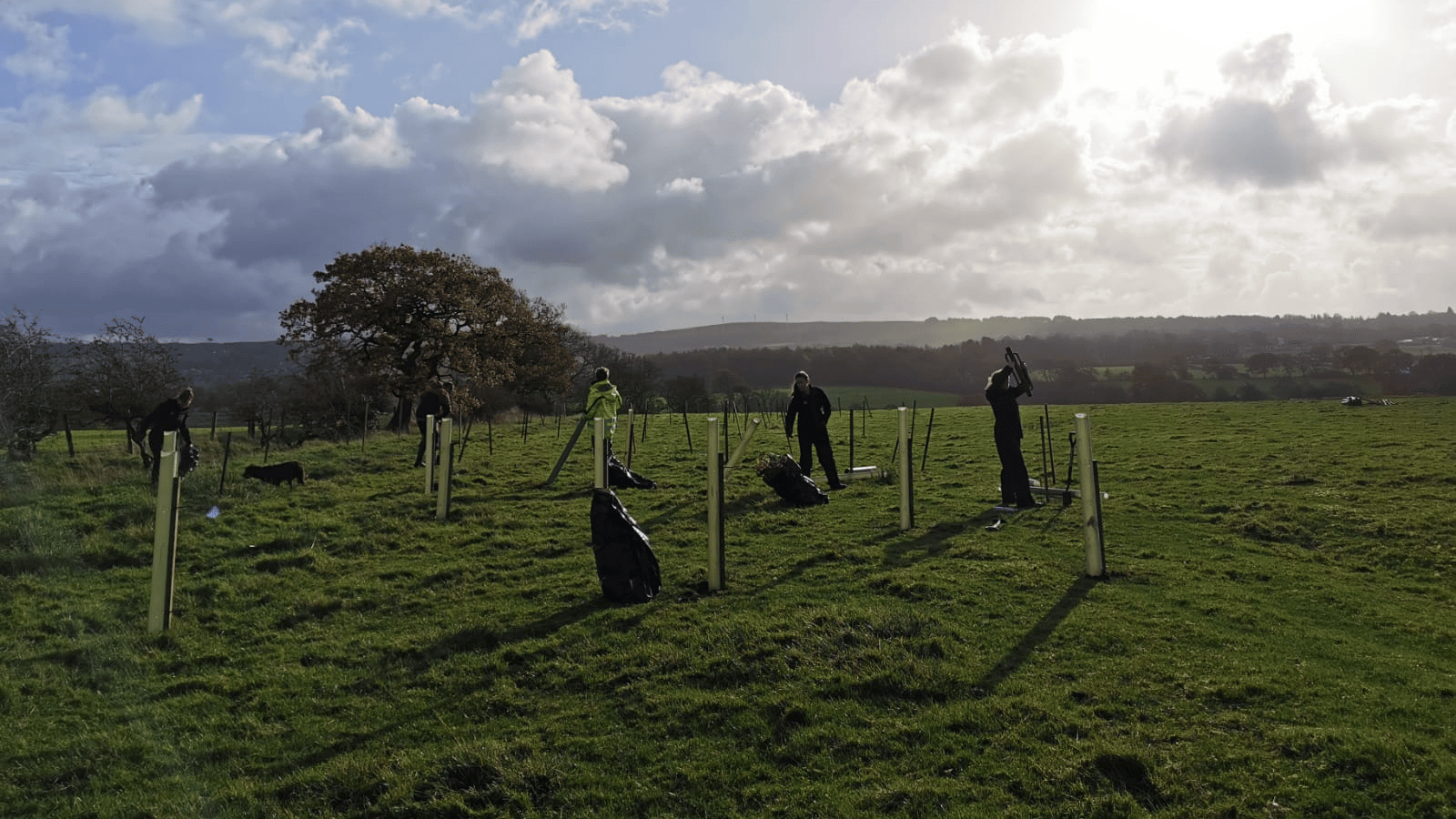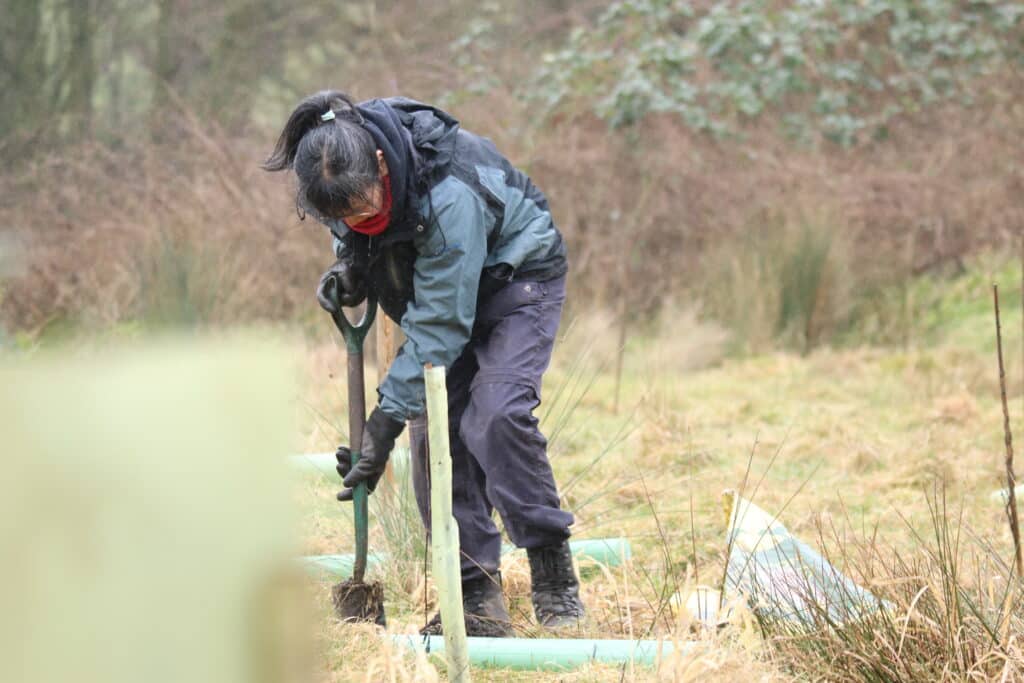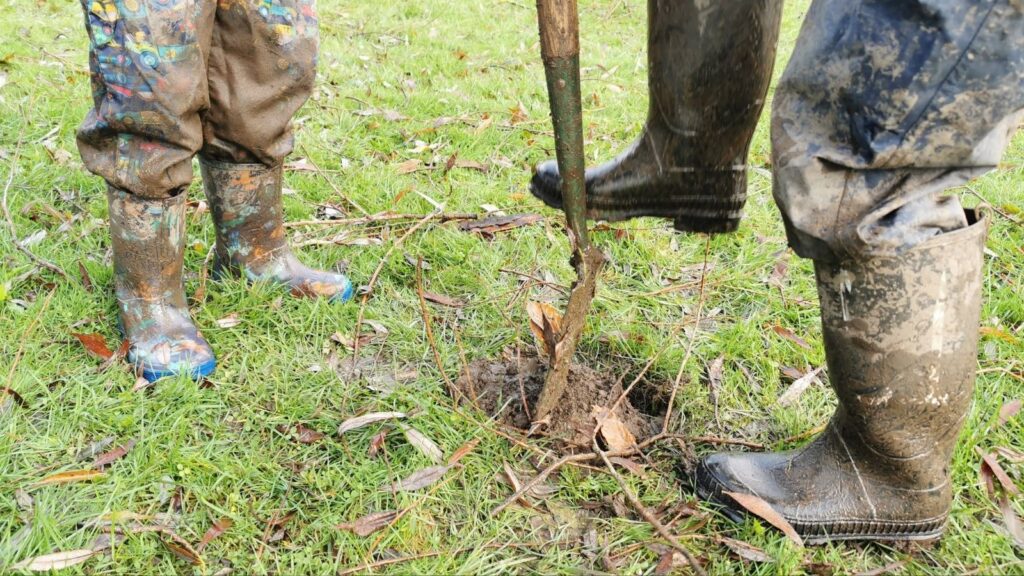
Catchment Systems Thinking (CaST)
Ribble Rivers Trust are receiving funding from United Utilities to create new woodlands at Sabden, Samlesbury, and the Forest of Bowland. The work is part of the company’s innovative Catchment Systems Thinking (CaST) approach. This approach promotes a holistic approach to managing the company’s catchment land and water quality, particularly phosphate.
Focussing on phosphate

Covering nine hectares, these woodlands will form the first part of the Valuing Ribble’s Water Woods project.
The project will focus on reducing phosphate run-off into waterways. Not only does phosphate pollution cause harmful blue-green algal blooms, it can also reduce oxygen levels in the water affecting breathing in river dwelling animals.
The new trees will also provide shade and shelter for watercourses, homes for wildlife, and help to mitigate flood risk amongst other benefits.
It’s not just nature that will benefit. By reducing river phosphates, this project will also benefit United Utilities by reducing the amount of phosphate removal treatment required. In turn this will reduce the energy and carbon associated with this process.
“Trees provide many benefits, from carbon capture to improving air quality for local communities, but it is often overlooked how much they benefit water; providing shade, slowing the flow and reducing nutrients that enter our rivers and streams. Working with partners we are seeking to substantially increase woodland cover in prioritised locations that provide the most benefit to people and wildlife.”
Jack Spees of Ribble Rivers Trust
The clever bit
What makes this project different is that both Ribble Rivers Trust and United Utilities are closely observing these sites. Together we’ll assess the effect the tree planting is having on water quality. As part of this we are gathering before and after data at all three woodlands. Data like this means we can monitor various metrics which help us to understand the benefits, and delivery timescales.
This will help both organisations develop future strategies for tree planting. Additionally we will be able to see whether it can be scaled up. Scaling up would mean we could deliver large scale, catchment-wide benefits to water quality and the wider environment.

Prior to the start of the project, water quality data was collected to provide a baseline. Ribble Rivers Trust will be collecting further data regularly over the coming years to build up a picture of how well the woodlands are working.
It is hoped that, in time, the project will show a reduction in phosphate levels in soils and watercourses and an increase in the variety and numbers of species calling these spaces their homes.
United Utilities’ innovative CaST approach, which looks at a river catchment as an entire system rather than a series of isolated issues, has already brought multiple benefits such as pollutant reduction and flood risk management along watercourses in Cumbria and Lancashire.

